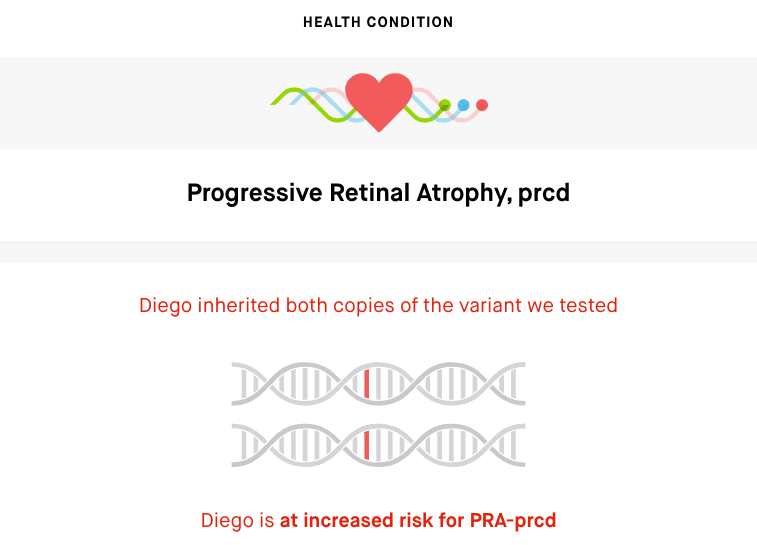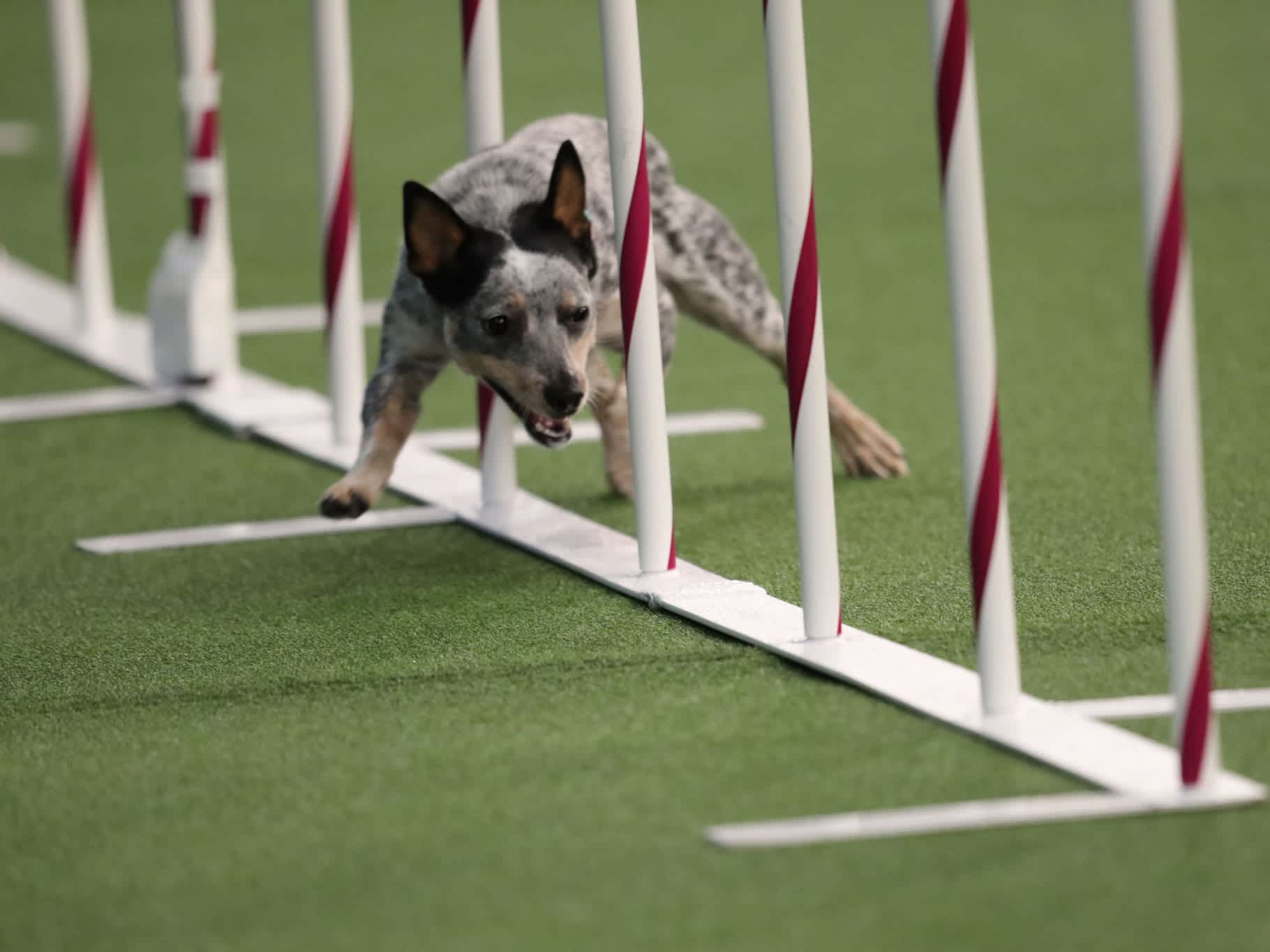What would you do if you found out your beloved pup would eventually become blind?
When Jane Flanders Salazar got an Embark Dog DNA Test for her dog Diego, she learned that he had two copies of a genetic variant that meant he would eventually lose his eyesight.
As reported in Newsweek, Jane rescued a second dog, Dixie, from a local shelter in Tennessee so that Diego would have a companion to bond with before he lost his vision.
Little did she know at the time that the companion dog she adopted was Diego’s sister.
Diego’s Embark story
When Diego was two years old, Jane and her husband bought an Embark dog DNA test. They had rescued Diego from a shelter and were curious to find out his breed mix.
The Embark test revealed that Diego’s breed results include American Pit Bull Terrier, Australian Cattle Dog, and Chow Chow, among others. But it revealed something else, too.
Diego inherited two copies of the PRCD gene variant, making it very likely that he would become blind as a young to middle-aged adult due to progressive retinal atrophy (PRA). PRA is a retinal disease that causes progressive, non-painful vision loss. This type of PRA affects the rod cells in the retina first, leading to difficulty seeing in low-light conditions (nighttime), before eventually affecting daytime vision in bright light as well. PRA affects both eyes.

Jane took Diego to a veterinary ophthalmologist, who confirmed that Diego will likely become blind by the time he turns five. Unfortunately, there is currently no treatment for PRA.
Although there was nothing that could be done medically about Diego’s vision, the veterinary ophthalmologist recommended a companion dog to help him through it.
Additional lights, such as night lights or lights near important objects like stairs can help in the beginning. Other ways to prepare for PRA include keeping furniture in the same place and training dogs using verbal commands rather than visual cues.
Check out Diego’s Embark profile:
Dixie’s Embark story
Jane started looking at local shelters for a companion for Diego. By sheer coincidence, she found Dixie, who looked a lot like Diego, just smaller. After an adoption application, Dixie soon became a part of the family.
Because an Embark Dog DNA Test provided life-changing information for Diego, Jane decided to test Dixie, too. But when she got Dixie’s results, Jane found something she didn’t expect.

The Relative Finder feature in her Embark results revealed that Diego and Dixie are not only family because they live in the same home—they are actually full siblings! Though they may be from different litters, Diego and Dixie have the same parents.

Did you know that 94% of Embark dogs have at least one dog in our database as genetically related as human first cousins? And many of them discover their siblings, parents, or offspring through Relative Finder, just like Jane, Diego, and Dixie.
Dixie’s Embark results showed that she doesn’t have the same genetic risk for PRA that Diego does. However, she does have two copies of a gene variant that could result in a higher risk for intervertebral disc disease (IVDD). IVDD is a neurologic condition that affects the discs in between vertebrae. It can be somewhat common in smaller dogs or those whose bodies are lower to the ground. In severe forms, it can cause severe pain and lack of normal movement and function of the limbs that may need to be addressed by specialized surgical procedures.
Certain lifestyle changes could help to prevent IVDD from becoming a problem for Dixie, such as limiting jumping on/off high furniture or keeping Dixie at an appropriate weight. Knowing her genetic risk may lead to a more prompt diagnosis if she shows signs consistent with IVDD.
Check out Dixie’s Embark profile:
Diego and Dixie’s family reunion
When the Embark Relative Finder revealed that Dixie and Diego are full siblings, Jane was shocked. She had thought it was just a coincidence that they looked so much alike.
(Although Dixie and Diego look related, that’s not always the case with dogs. Find out why mixed-breed siblings may not look alike, due to something called recombination.)
Dixie’s behavior is completely different from Diego’s, but they get along just like siblings do. “She plays with him beautifully. I mean, she can take whatever he gives her. They love each other. I mean, they kind of rough house a lot. But she’s been very good for him socially,” Jane says.

Using Relative Finder, Jane recently connected with another of Diego and Dixie’s full siblings, Elby Jones. Diego, Dixie, and Elby Jones plan to have a family reunion and puppy play date in the near future.
Learn how you can get to know your pup’s story by discovering and connecting with their family using our Relative Finder.


















